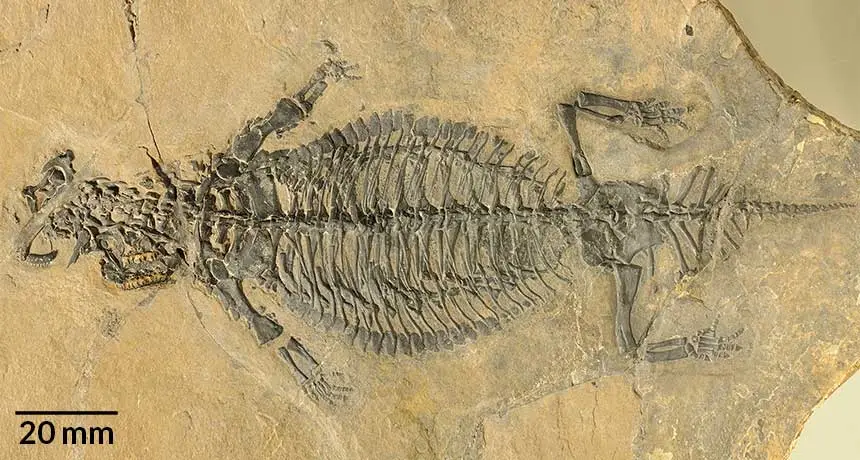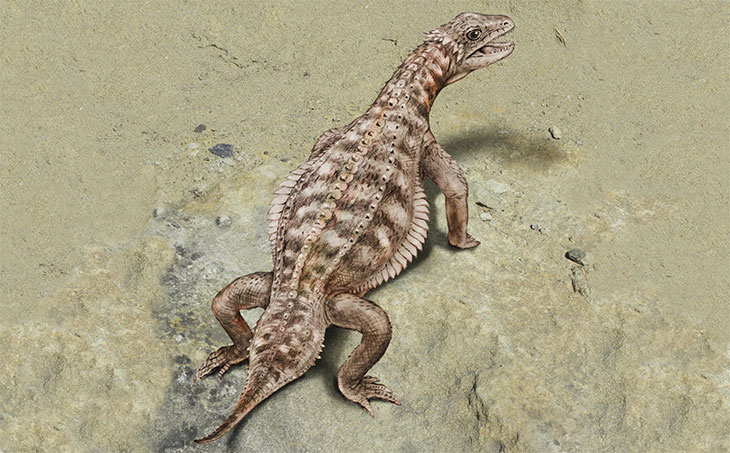
ROUND AND ROUGH A round body and stiff, short legs revealed in a complete fossilized skeleton of Eusaurosphargis dalsassoi (shown) suggests the creature wasn’t sleek enough to swim.
Beat Scheffold/Palaeontological Institute and Museum/University of Zurich, Switzerland







